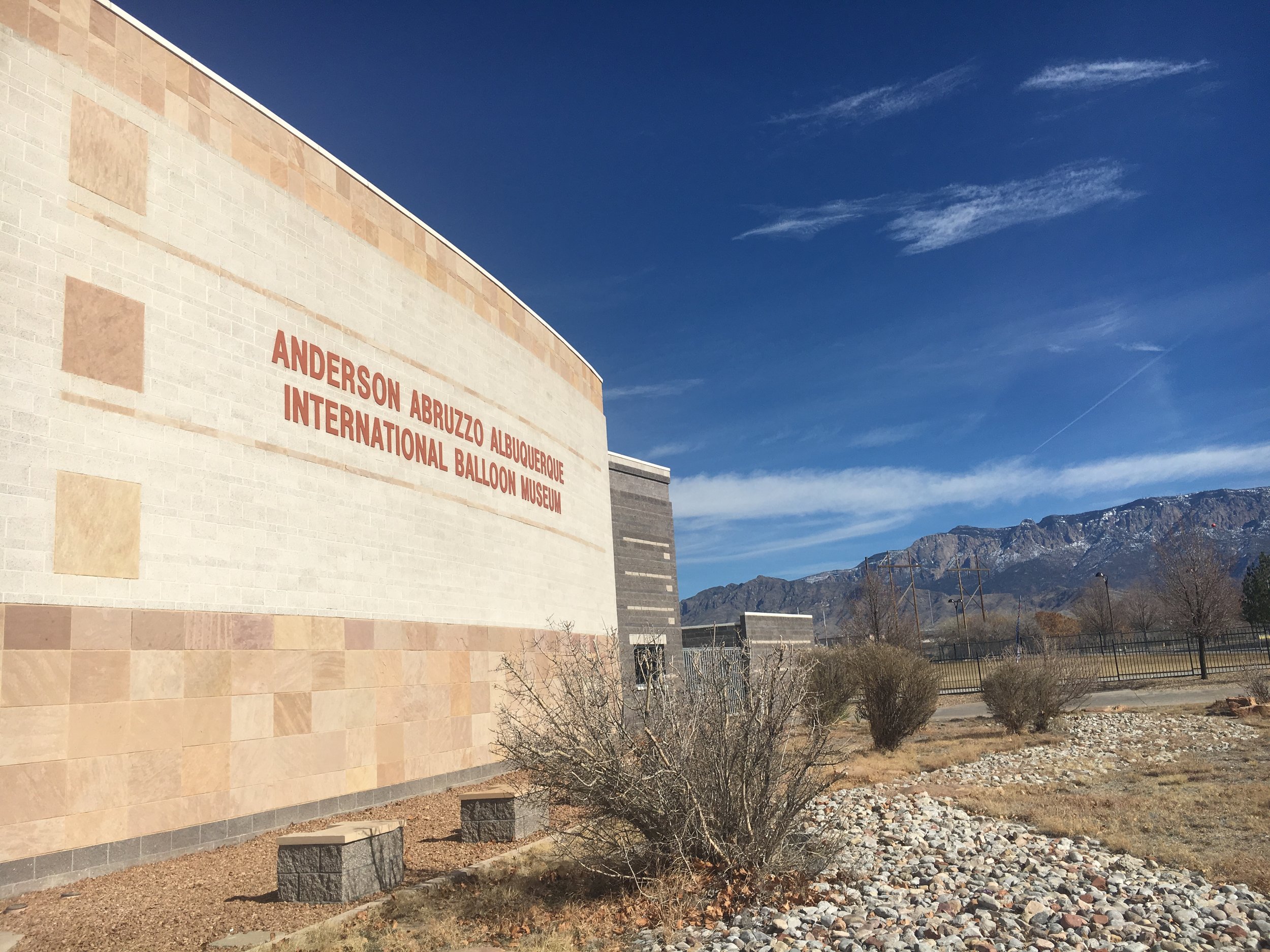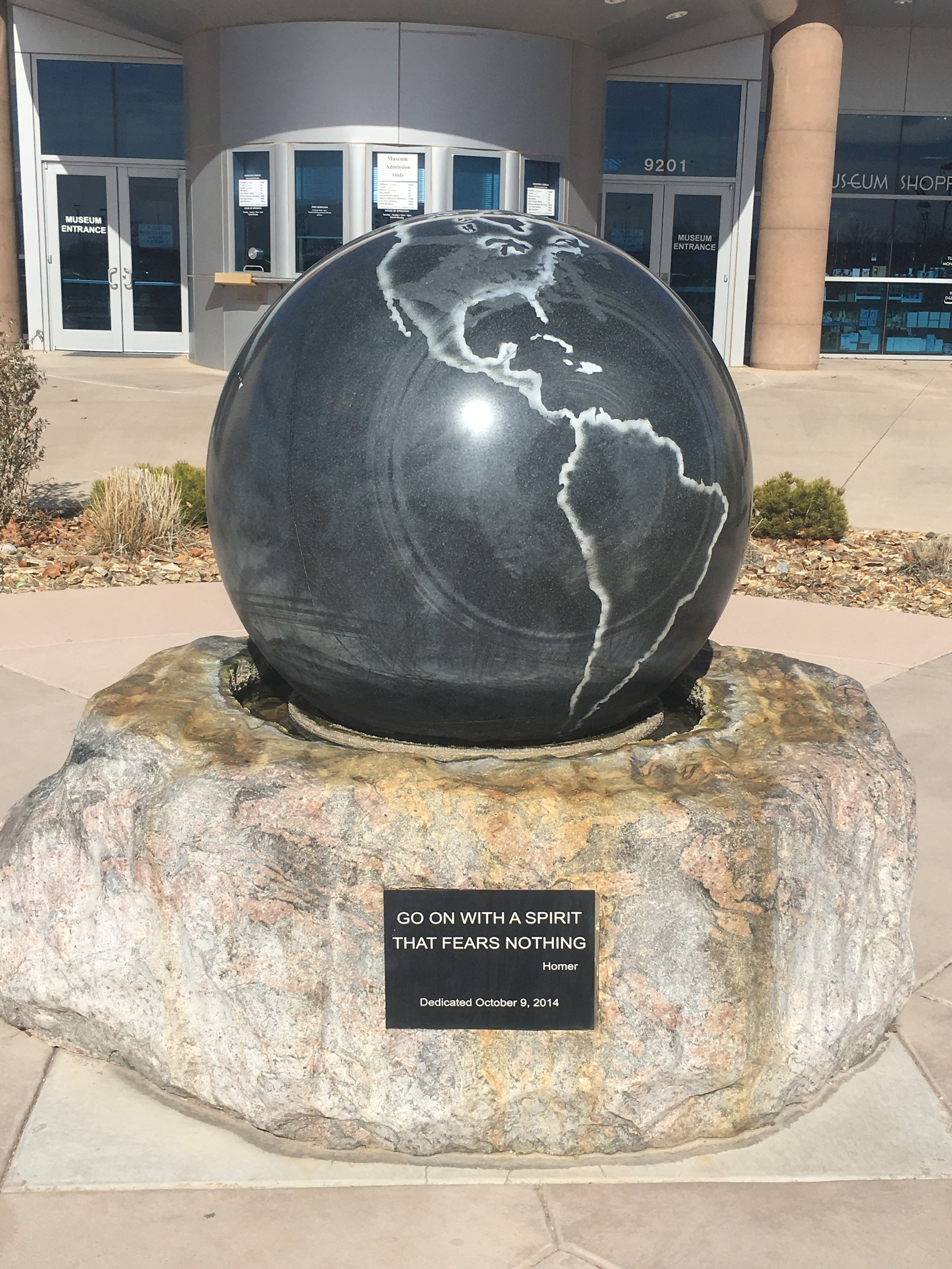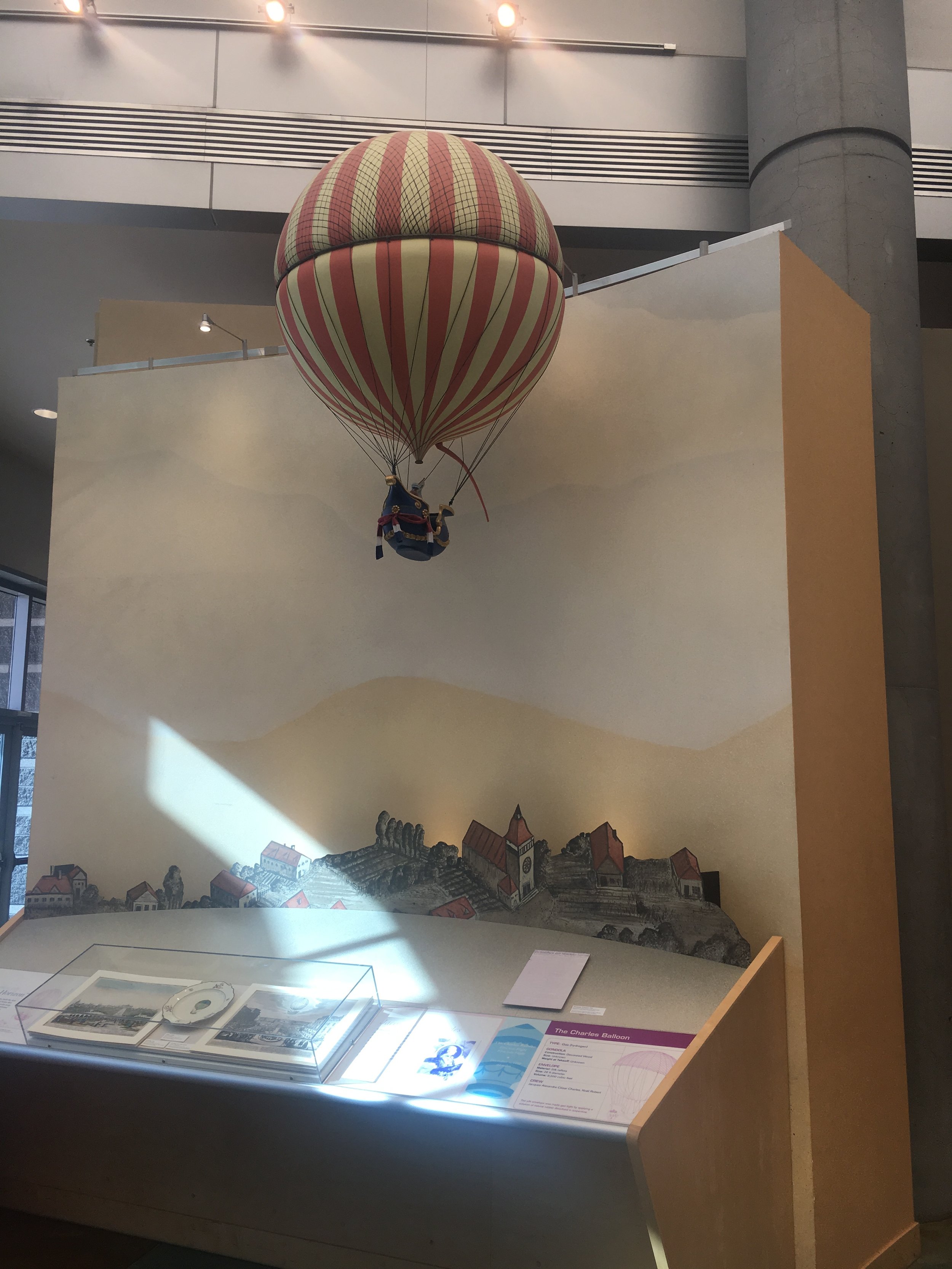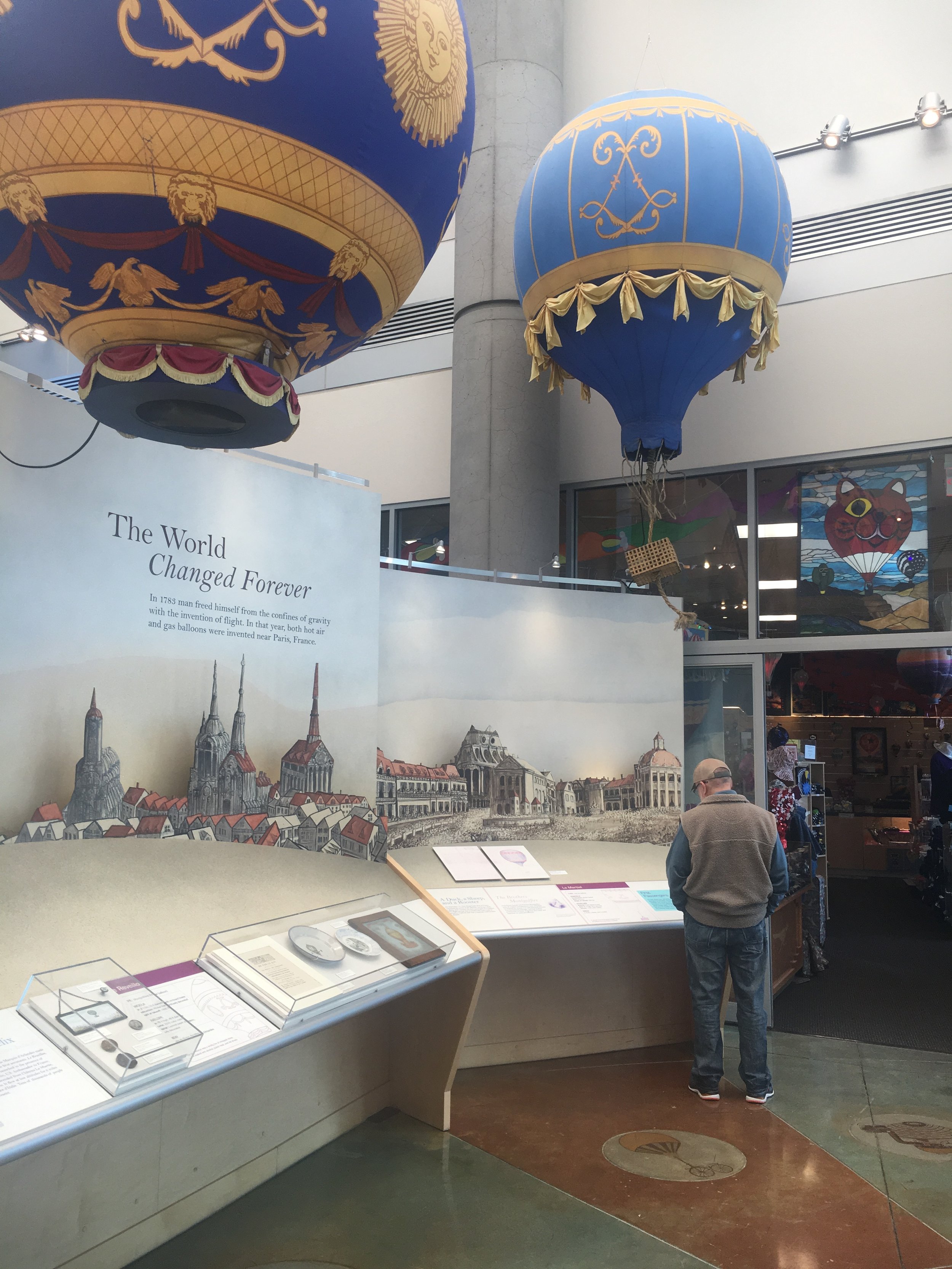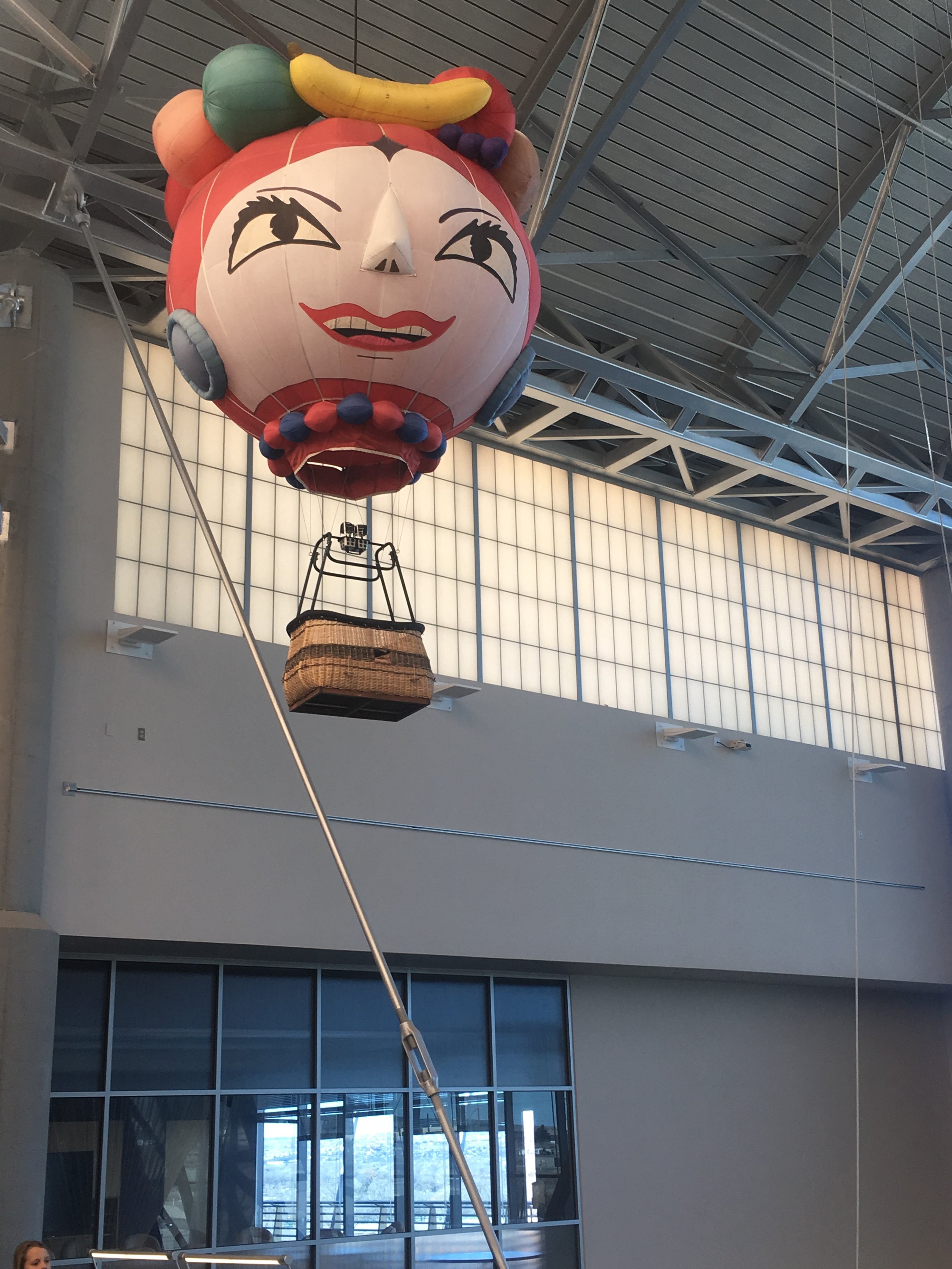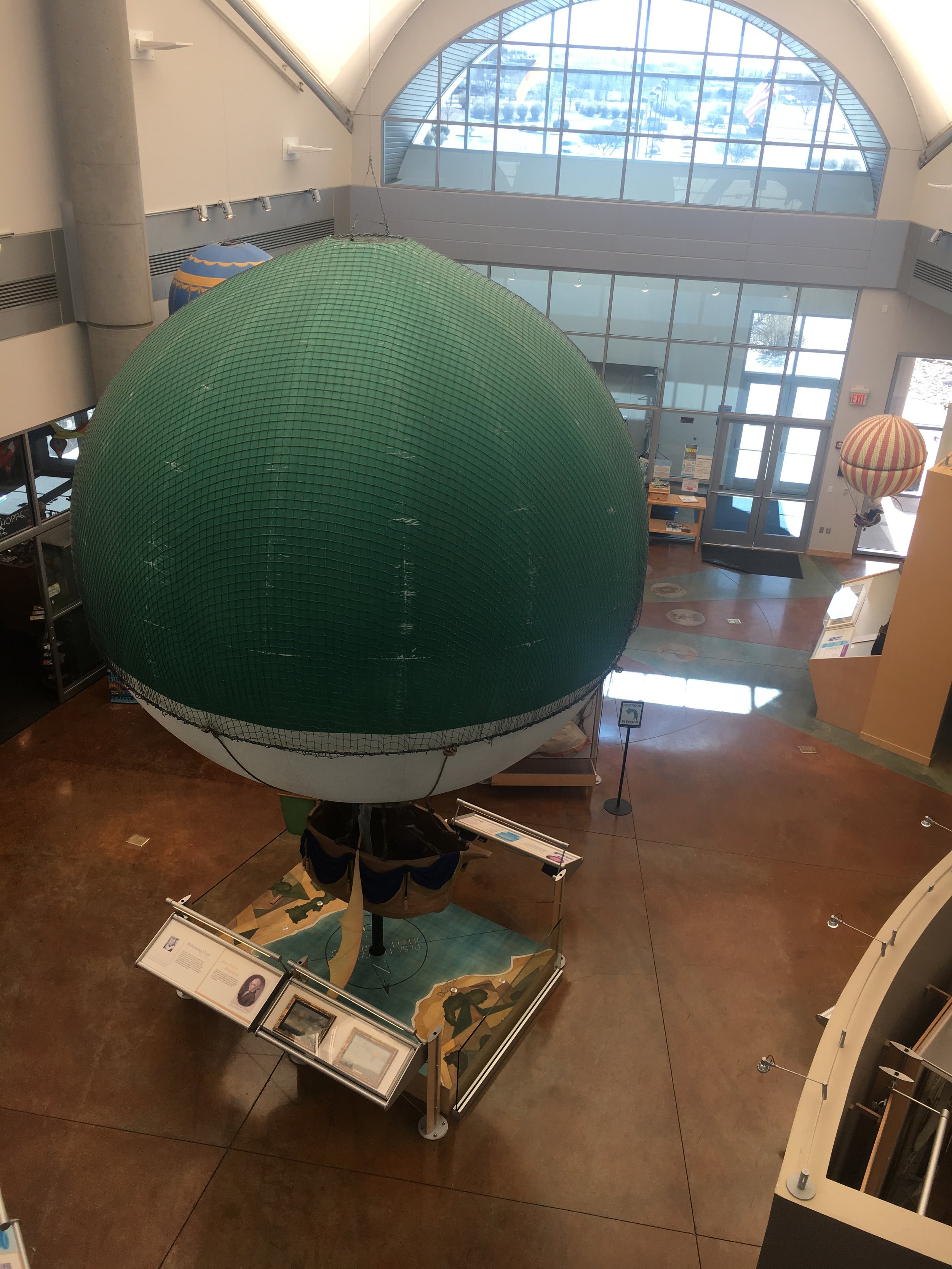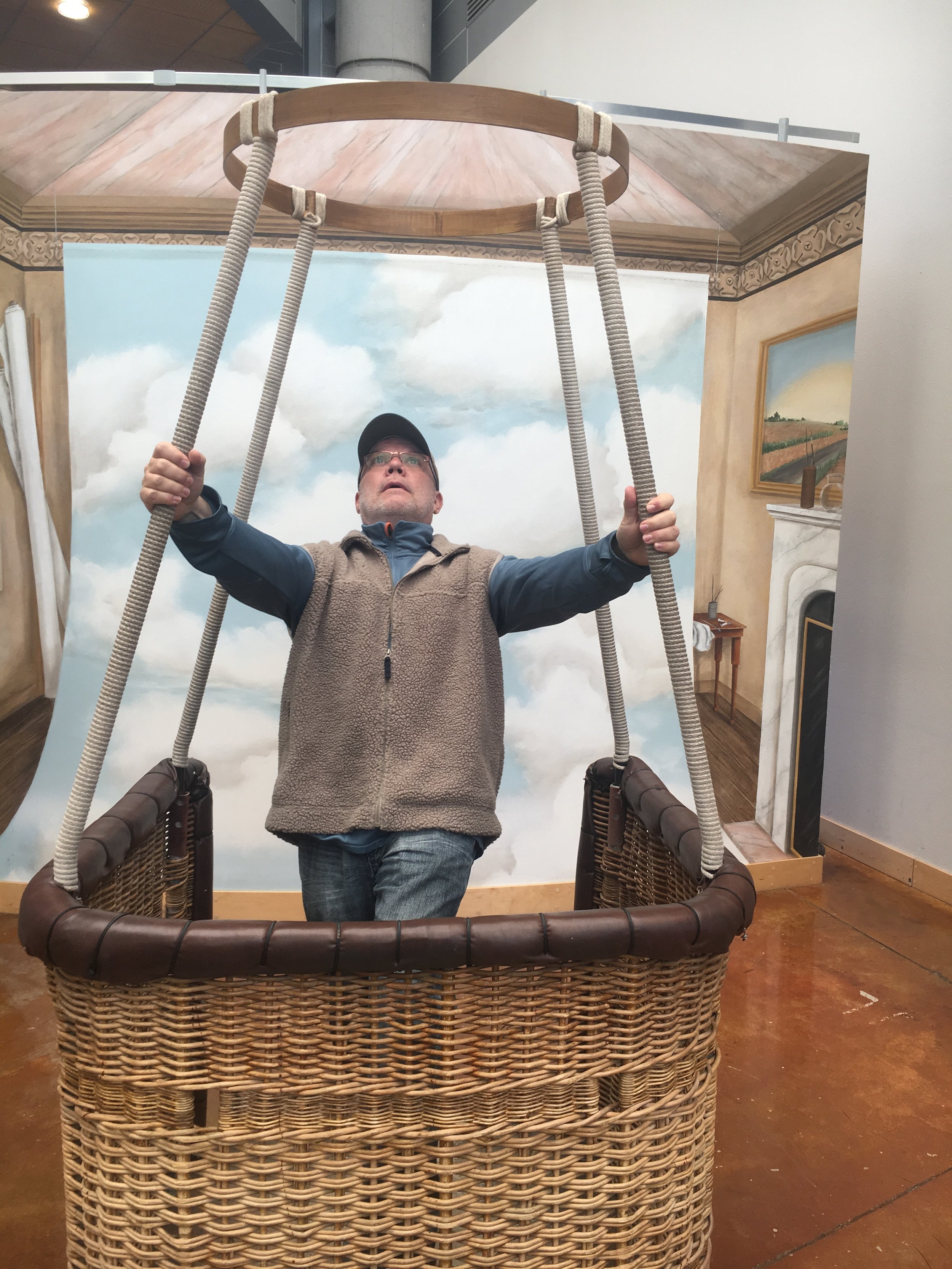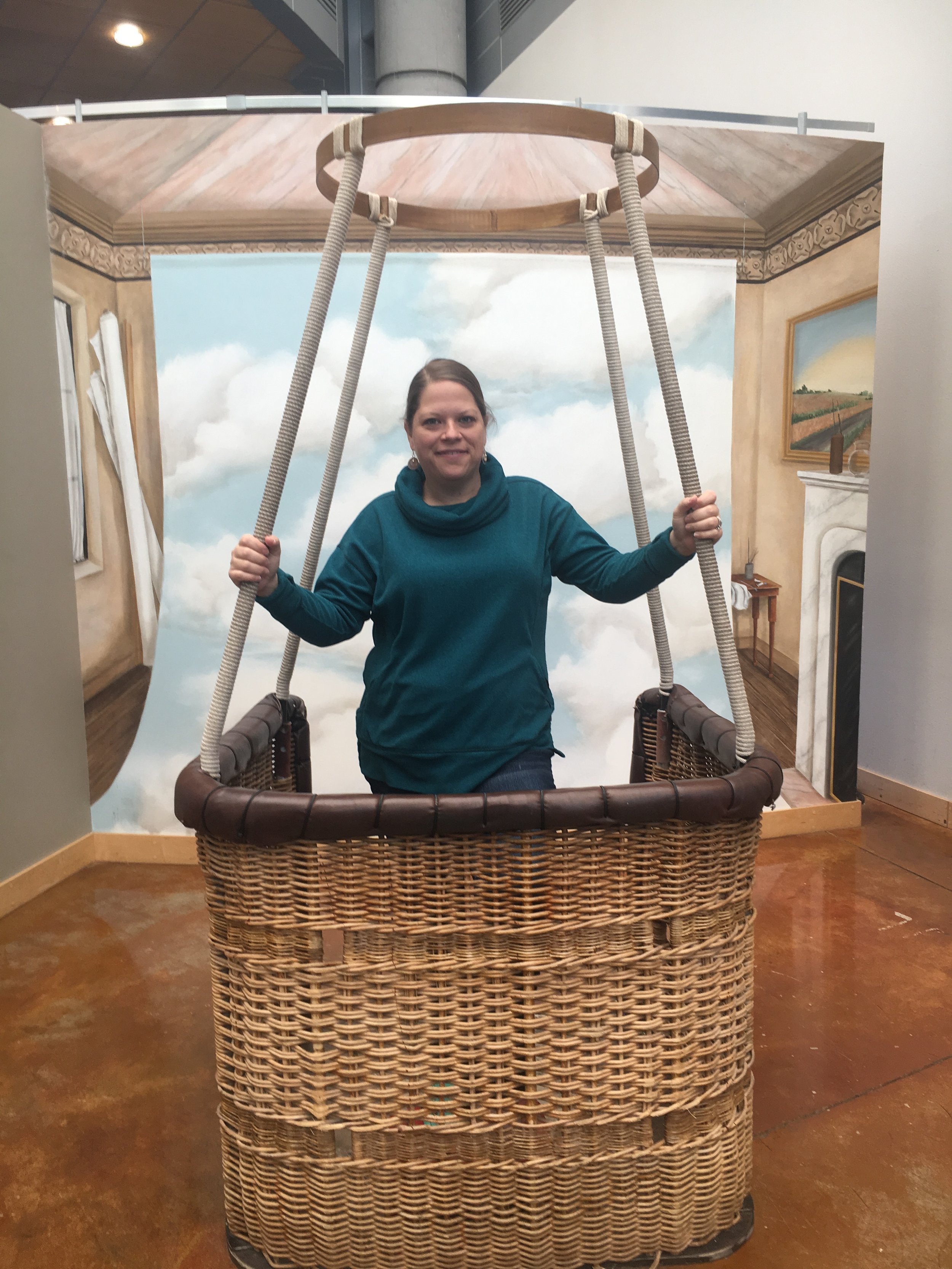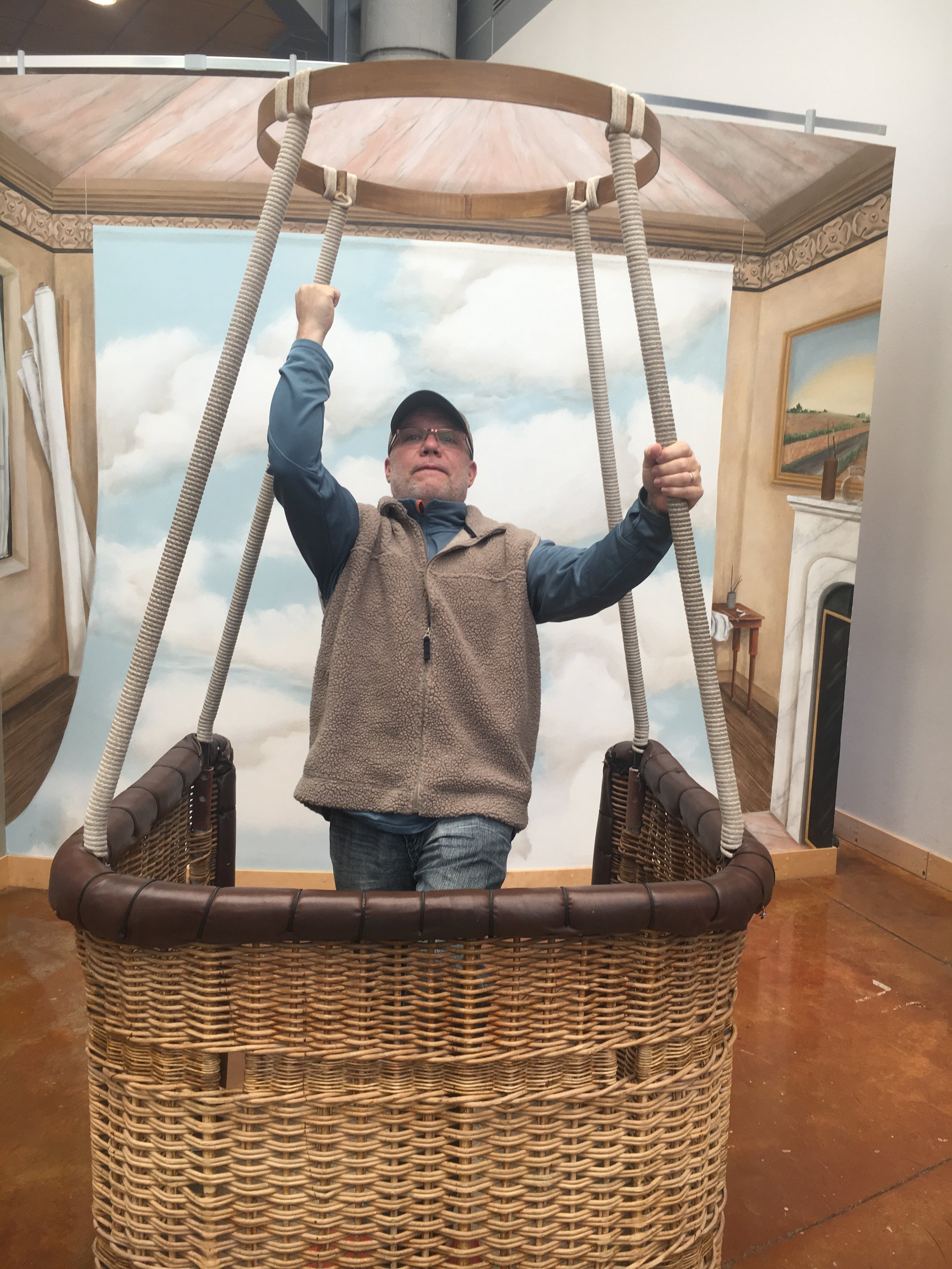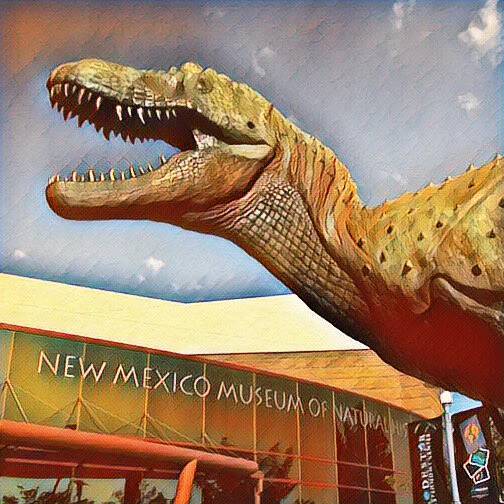Up, Up, and Away at the Albuquerque Balloon Museum
January 27: In the RVing world, trips to Albuquerque are most common in October. Is it because of the sunny, beautiful fall weather? Well no, but I’m certain that doesn’t hurt the trend to head to the ABQ that time of year. Rather the big draw is a nine day festival — the Albuquerque International Ballon Fiesta in the month of October. The event is the largest ballon festival in the world. Being that it is one of Albuquerque’s largest tourist attractions makes it a major source of income for the city and local businesses. Attendance to the balloon fiesta typically nears 1 million visitors. It breaks the record books as the world’s most-photographed event with organizers estimating 25 million pictures are taken during the event. It is not surprising that you will often find the event sponsored by Kodak and Canon. The combination of clear blue skies and brightly colored balloons mixed with the sunrise or the clear night skies is a sight to be seen. It’s a novice photographer’s dream - can I bad photo really be taken?
So I’m telling you all of this to say no, we weren’t here yet for the 2018 Balloon Fiesta and we will be leaving far before the 2019 one gets underway, but what we did get to enjoy was the Balloon Museum that sits on the grounds where the Ballon Fiesta is held each year. Named after two pioneer balloonists from New Mexico, the Anderson-Abruzzo International Museum is an attraction which should be added to your Albuquerque to-do list. While we always encourage supporting local businesses and attractions, our thrifty side would also recommend checking out their free entry days. But never fear, the entry fee is super reasonable even if your schedule doesn’t align with the gratis days offered by the museum.
Upon entering, the exhibits start with early ballooning history documenting the first balloon flights in 1783. We were impressed by gondolas and ballon replicas that made transatlantic and transpacific flights. It seemed almost unreal that these dirigibles were capable of making such extended flights. I think a few hours stuffed into a airline seat is bad, so I can’t imagine days in a tight gondola. We also enjoyed the 4-D theater which shows two videos — the first being a rundown of the Balloon Fiesta and the second filmed aboard a Rainbow Ryders hot air balloon as it soars over Albuquerque.
We most certainly aren’t balloon enthusiasts but we appreciated learning about the history and evolution of ballooning. We took about an hour looking around which was plenty of time for us to learn and enjoy, but I’m certain balloonists would dig even deeper.
While at the museum we learned many interesting facts about hot air balloons, but I think the fact that caught our attention most was the Fugo project. Have you heard about it? The Japanese successfully bombed the United States in the latter stages of World War II via hot air ballon. Yes, we reacted the same way - “They did what?” It is a little known secret and was kept that way for quite some time. The balloon bombs floated across the Pacific Ocean from Japan with each trip taking between 30 - 60 hours which seems pretty speedy to me considering a ride on a jetliner would be close to 12 hours. According to Japanese records, 9,000 ballon bombs were launched and nearly 300 were found across North America, ranging from Alaska, throughout Canada, down to Mexico and 27 states in between with the eastern-most state being Michigan. Japan hoped these balloon bombs would start forest fires that would create havoc and disrupt the United States war effort. While some of the early balloon recoveries were publicized, the government ordered a publicity blackout with hopes of convincing the Japanese that their plan was failing.
Even though many balloons reached North American, many of them failed to release the loaded bomb when they arrived. However, one specific ballon was deadly in May of 1945 when it struck a group of picnickers in the woods of Oregon. These six casualties were the only people killed on American soil during World War II when the victims inadvertently detonated the explosive balloon. Even though it was known that the Japanese balloon bombs were the cause, it was still kept as a secret. The reason the situation was kept silent was two-fold to prevent the Japanese from knowing their sent weapons were indeed arriving in the states as well as to limit public and media hysteria. It is thought there could still be balloons strewn across North American undiscovered and as late as 1992, a balloon bomb was recovered in Oregon. At this point, it seems this information should be added to the history books as fact as news of it certainly shocked both of us.
That was definitely the most shocking thing we learned, but the most interesting tidbit was the phenomenon known as the “Albuquerque Box.” Before arriving in Albuquerque, I researched why hot air ballooning is so popular in the area and came up with answers such as “ideal winds” and “clear skies” which seemed like a good enough reason for my inquiring mind. However, the rationale is little more detailed than that. The “Albuquerque Box” is a consistent wind pattern that ballooners use to navigate in the cool desert morning temperatures. In the “box” the winds tend to blow from the north at low elevations and from the south at higher elevations. Balloonists are able to use these winds to navigate in a “box shape” to take off and land in the same general area. Especially during the Ballon Fiesta, the hundreds of balloons are able to depart from the Balloon Launch park in the midst of onlookers and return to land nearby.
While we won’t be here for the world-renowned event, we will always remember the colorful hot air balloons contrasting the bright blue New Mexico skies we often spot on our morning work commute. Even more, we look forward to embarking on our first hot air balloon flight before we leave Albuquerque in April. Stay tuned for a hopefully thrilling post about that experience.

